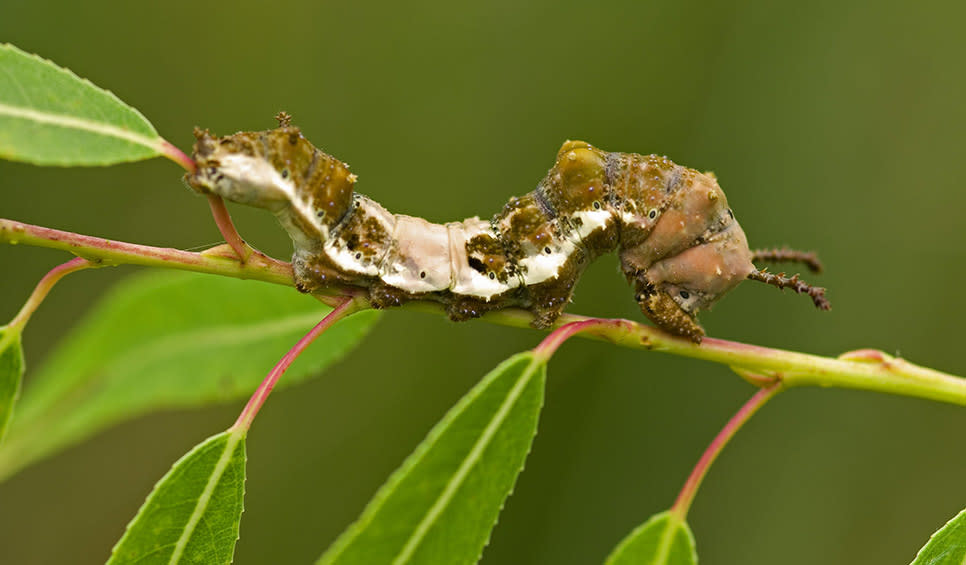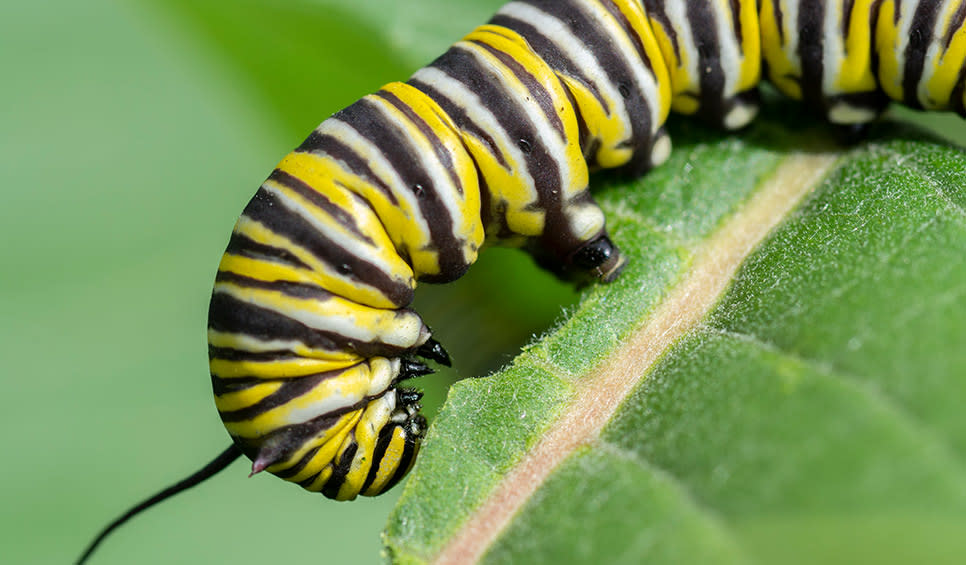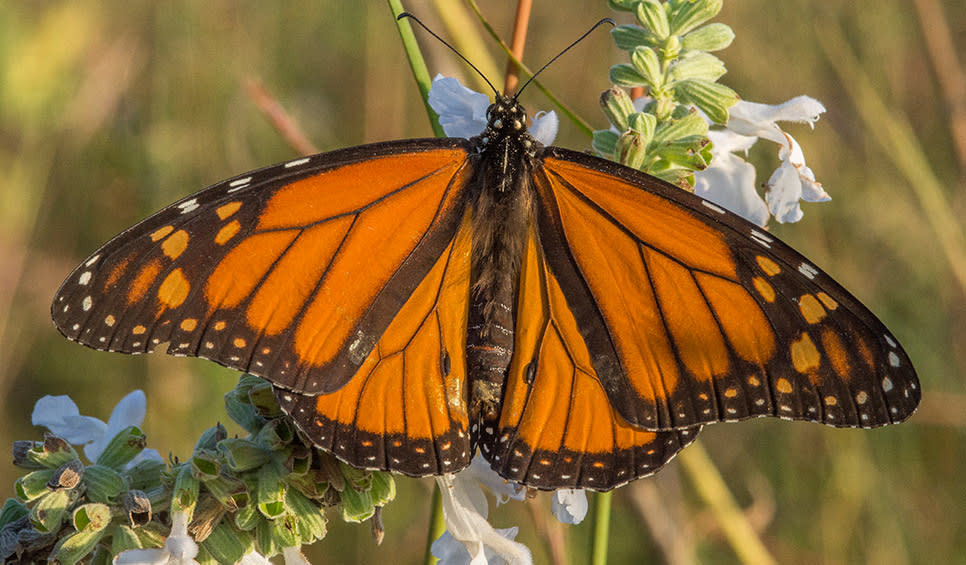Header photo: Viceroy Butterfly by Ryan Rasmussen/TNC
In early September, our Kankakee Sand prairies are aflutter with orange on yellow, white and purple. Monarch and viceroy butterflies are nectaring on goldenrods, bonesets, and ironweed, and it is one of the prettiest sights to be seen!
Both the monarch (Danaus plexippus) and the viceroy (Limenitis archippus) are orange, black, gorgeous, and often mistaken for one another. But there are subtle differences between them that can help you identify one from the other in the field.
Viceroys are smaller in size than monarchs. Viceroys have a wingspan of typically 2.6 to 3 inches whereas monarchs measure 3.5 to 4 inches from wing tip to wing tip.
Viceroys have a dark black horizontal line that spans from one hindwing across to the other. Monarchs do not have this same horizonal line on their hindwings. Admittedly this band can be hard to see when the viceroy is flitting about. It’s much easier to look for the dark band when the butterflies are at rest with their wings open.
Speaking of wings open, viceroys hold their wings out flat when gliding. Monarchs hold their wings in a V-pattern when they glide through the air.

Photo: Viceroy caterpillar by Chris Helzer/TNC
In the butterfly stage the viceroys and monarchs look similar, but in the caterpillar stage they look quite different. The viceroy caterpillar is commonly described as looking like bird poop, a mottled brown or green warty caterpillar with splashes of white. The monarch caterpillar is a showy, yellow-green, white and black regularly-striped smooth caterpillar.
Not only do the caterpillars of viceroys and monarchs look different, they also have different larval hosts – the species of plant on which the caterpillar feeds until it pupates and becomes a butterfly. Willows and the poplars are the only type of plants that the viceroy caterpillar will eat. Monarch caterpillars feed solely on milkweeds.

Photo: Monarch caterpillar by Chris Helzer/TNC
But as adults, both viceroy and monarch butterflies feed on the nectar of many of the same types of fall flowers, such as tall boneset, field thistle, joe-pye weed, stiff goldenrod, ironweed, and flat-topped asters. Sometimes you can even find both viceroys and monarchs nectaring together on the same plant!
The monarch is an international traveler, migrating each fall from all across the United States and Canada down to Mexico if they are east of the Rockies, and to southern California coast if they are west of the Rockies. There they overwinter, and then when spring springs, the monarchs make their way back, via a series of multiple generations. Each generation flying a bit further north until they have arrived at their summer locations.

Photo: Monarch butterfly by Chris Helzer/TNC
The viceroy has a different strategy. It will head into winter in the caterpillar stage, rolling itself up in a leaf until spring. When the temperature warms in spring, it will leave the shelter of the leaf, resume feeding on willows and poplars, pupate and finally emerge as a butterfly.
Viceroys are considered common and widespread all throughout the United States east of the Rocky Mountains and into southern Canada in areas with willows. The monarch can be found in north and south America in areas with milkweeds, but their numbers are declining. Monarch numbers have dropped so precipitously that is being considered for classification as an Endangered Species by the US Fish and Wildlife Service. The main reasons for the monarch’s decline include habitat loss and a decrease in the number of milkweeds on which the monarch caterpillar feeds exclusively.
At Kankakee Sands, we have been planting prairies that are chock full of milkweeds for the monarch caterpillars, and flowers for the monarch butterflies. We have more than 7,000 acres over which the butterflies can spend the summer feeding, mating and laying eggs. In the fall, our prairies serve as a stopover site for the migrating monarchs. It’s an honor to have the monarchs, and the viceroys, here!
The monarch is such an important species from a cultural perspective that many partners--including the Field Museum, Save the Dunes, Shirley Heinze Land Trust, Audubon Great Lakes and The Nature Conservancy--have come together to host a festival in its honor –Festival de la Monarca. This year the festival will be held virtually from September 12 to September 19, 2020, and you are invited to attend! All of the events are free and appropriate for all ages.
Festival activities include
- Finding out about a community science project to gather data on monarchs
- Learning about and practicing an ancient Aztec dance inspired by the monarch butterfly
- Learning how to make a pollinator garden in your own yard
- Watching The Guardians – a 2018 documentary that “poetically interweaves the lives of the threatened monarch butterfly with an indigenous community fighting to restore the forest they nearly destroyed…this cinematic journey through the butterfly dense mountaintops of Michoacan tells an intimate story of a unique community at the front lines of conservation.” -theguardiansfilm.com
- There will even be prizes!
To find out more about the festival, visit nature.org/events or the Facebook event page https://www.facebook.com/events/140202493983942.
We hope you can make it out to Kankakee Sands this September to enjoy the viceroys and monarchs, and we are really looking forward to spending time with you virtually during Festival de La Monarca!
The Nature Conservancy’s Kankakee Sands is an 8,300-acre prairie and savanna habitat in Northwest Indiana, open every day of the year for public enjoyment. For more information about Kankakee Sands, visit www.nature.org/KankakeeSands or call the office at 219-285-2184.



